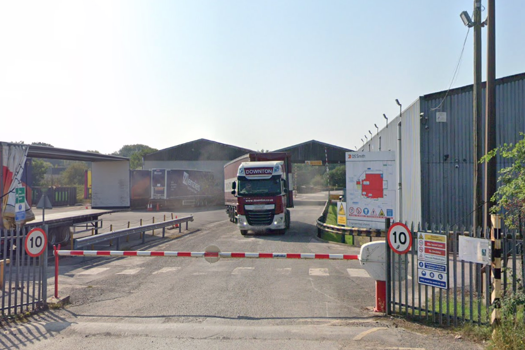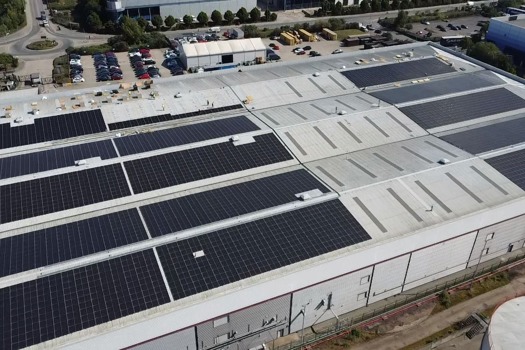Called the Super Deduction, it’s a new capital allowance which, in summary, allows companies – note that last word, we’ll come on to that shortly – to reduce their taxable profits by 130% of the cost of new equipment.
Understandably, the move has attracted a lot of interest. But it’s also raised a number of questions.
The Super Deduction defined
As Will Silsby, a technical officer with the Association of Taxation Technicians, explains, the deduction is “a new temporary allowance that is designed to give a greater and faster level of tax relief on qualifying expenditure incurred between 1 April 2021 and 31 March 2023.”
For Kieron Batham-Tomkins, tax manager at accountancy firm, BHP, the allowance is all about getting the economy going. Specifically, he says that “the Super Deduction is the latest initiative from the UK government to promote spending by limited companies on the purchase of new plant and equipment”. Importantly, he says that “this is the first time, from memory, that the government has ever enhanced tax relief above the actual expenditure incurred”.
Offering more detail, Silsby explains that the Super Deduction works by treating a company as if it had spent an extra 30% on an item and then allows tax relief on the whole of that uplifted amount in calculating the tax bill for the year of expenditure. “So,” he says, “with a 19% tax rate, the Super Deduction can reduce a company’s tax bill by some 24.7% of the actual cost of qualifying items.”
But the allowance isn’t available to all businesses; instead, and recalling the earlier reference, it is only be available to those which are subject to Corporation Tax – typically limited companies. This, says Batham-Tomkins, means that “unfortunately, sole traders and partnerships are not eligible for the enhanced relief”. Further, it’s also unavailable to a company if it is ceasing activity.
Only certain expenditure qualifies
The Super Deduction only applies to items which are treated for tax purposes as plant and machinery. “For many businesses”, Silsby says, “this is likely to cover most of their expenditure and simple examples of plant and machinery include anything from a laptop to a double-decker bus. In contrast, a building or structure, or something intangible such as a franchise, cannot be plant or machinery and will not be eligible for the Super Deduction.”
And adding to Silsby’s list, Batham-Tomkins talks of other items such as machinery, tooling, computer equipment, software, furniture and commercial vehicles such as vans and lorries.
But as should be expected with tax law, there are other key terms to note too. And here Batham-Tomkins details how the spend must be made on brand new – not secondhand – assets. Also, he says that “assets don’t qualify when they are acquired for leasing, which can rule out property rental companies and certain group structures” such as holding companies leasing assets to subsidiaries.
There is also one special provision in the legislation that Silsby highlights: that “any expenditure incurred as a result of a contract which was entered before 3 March 2021 will be ineligible as the expenditure is treated as made before 1 April 2021 regardless of when payment was required.”
The practical effect of the Super Deduction
Before delving into the effects of the Super Deduction, Silsby makes plain that all businesses, whether limited companies, partnerships or sole traders, are already entitled to an Annual Investment Allowance (AIA) which enables them to get tax relief on the whole of their qualifying expenditure for the year of purchase, up to an annual limit.
To this, Batham-Tomkins adds: “The Super Deduction relief works much in the same way as the AIA, albeit at 130% of the expenditure incurred, but unlike the AIA, there is no limit on the amount of expenditure which can be incurred.”
Back to Silsby, he illustrates how valuable the allowance is: “Until 31 December 2021,” he says, “the AIA limit is £1 million, but is scheduled to reduce to £200,000 from 1 January 2022.” He explains: “The higher limit means that a company spending £500,000 before 1 April 2021 on plant or machinery will (without the Super Deduction) get a tax reduction at 19% on that amount – so £95,000. If that same level of expenditure was incurred after 31 March 2021 and qualified for the Super Deduction, the tax reduction would instead be £500,000 x 130% which, at 19%, gives a tax reduction of £123,500 – so £28,500 more.”
An interesting effect of the Super Deduction is that at higher levels of qualifying expenditure it creates a disproportionately greater benefit.
A separate Special Rate allowance
As already noted, some items of plant and machinery are not eligible for the Super Deduction. This includes all items of capital expenditure which are treated as ‘special rate’ assets. Silsby details that these assets include integral features of a building (items like heating, lighting and power systems, air conditioning and escalators and lifts), long life assets (with an expected useful life of at least 25 years), thermal insulation and solar panels.
He says that “under the general capital allowance legislation, the annual Writing Down Allowance on these items of plant or machinery is just 6% rather than the normal 18% meaning that these ‘special rate’ assets are written off more slowly for tax purposes”.
But there’s a catch, says Silsby: “If a company incurs qualifying expenditure on these types of asset in the two-year period starting on 1 April 2021, they cannot qualify for the 30% value boost.” However, he says that companies in this situation will be, provided that the particular assets are not specifically disqualified, entitled to new Special Rate Allowance – this “provides tax relief for the year of expenditure on 50% of the actual cost instead of just 6%. Unlike the Super Deduction, this does not increase the value of tax relief over the life of the asset, but it does significantly accelerate the relief.”
So, if, for example, the company spends £400,000 on such assets in a year, it would (ignoring the availability of any AIA) normally take over 22 years to get tax relief on 75% of the cost according to Silsby’s calculations. But by allowing half of the cost to be written off in the year of expenditure, the Special Rate Allowance provides tax relief on 75% of the cost in 11 years.
It’s notable, though, that Batham-Tomkins reckons that for all limited companies that are eligible to claim, at 130% it is more efficient to use the new Super Deduction regime rather than the existing AIA.
Super Deduction, the Special Rate Allowance and tax losses
As any good accountant knows, a feature of the capital allowances regimes is that they can reduce a company’s taxable profits. In practical terms, Silsby says that this can enable a repayment of Corporation Tax for the previous period. “But,” he adds, “because of the pandemic, the chancellor has announced that losses arising in a company’s accounting period which ended between 1 April 2020 and 31 March 2022 can be carried back for two further years.”
Such a loss carry-back could, states Silsby, enable a company that had depressed profits to still receive early tax relief. He comments, though, that “it is important to consider the alternative of carrying the loss forward, particularly if that might result in tax relief at 25% instead of 19%”.
It’s interesting that, perhaps cynically, Batham-Tomkins thinks that there’s been some “very clever planning by the government”. And by this he’s referring to the Super Deduction being available up to 31 March 2023. “At which time,” he points out, “the corporation tax rate rises to a maximum of 25%.” He continues: “If the new Super Deduction encourages companies to spend earlier than originally planned, the effective tax relief is, as we saw earlier, 24.7%. But from 1 April 2023, if companies then reduce their planned spend, higher profits could then be taxed at 25%, an increase of 0.3% on the current tax relief being offered.” In other words, there seems to be a little bit of balancing act required.
One more thought
Lastly, it shouldn’t be forgotten that an important consequence of both the 130% Super Deduction and the Special Rate Allowance is that part of the tax reduction will be clawed back if the relevant asset is subsequently sold. “This,” advises Silsby, “needs to be borne in mind if such a disposal is likely.”
Batham-Tomkins offers a further thought. He explains that “when receiving proceeds on sale of assets claimed under old regimes, the proceeds are deducted from the company’s capital allowances pool balance and effectively taxed over several years”.
He gives the example of a company that buys a piece of machinery for £500,000 in the year ending 31 March 2022 which is then sold in in the following accounting period to 31 March 2023 for £350,000.
In overview, the purchase price of £500,000 gets uplifted for tax purposes to 130%, or £650,000. At a 19% tax rate that’ll see a £123,500 tax saving. But when it’s sold for, say, £350,000, that value will also be uplifted by 130%, or £455,000 which at the same tax rate leads to an £86,450 tax liability. But overall, the company is better off with a tax saving of £37,050.
The situation, warns Batham-Tomkins, is more complex where business years straddle tax years beyond 1 April 2023 when corporation tax rates potentially rise for some, depending on profitability. Here, good advice is especially important. But fundamentally, he warns companies not to try and game the system.
In summary
With the complexities set down, it’s not hard to see that it should be essential for any company to take appropriate professional advice in advance to ensure that the Super Deduction or the Special Rate Allowance works as expected.










